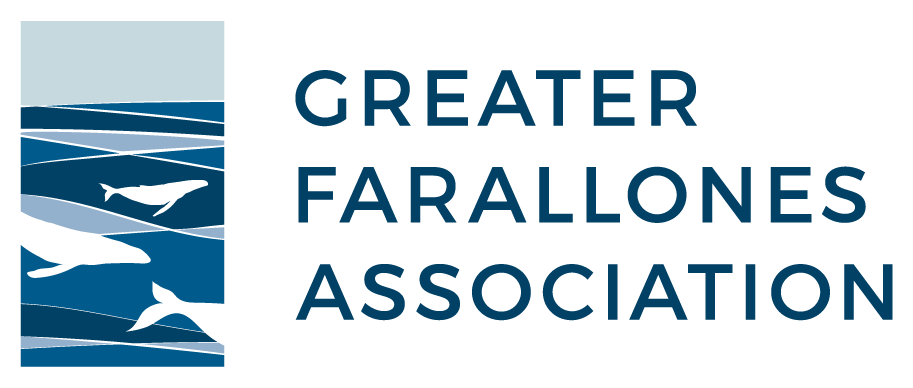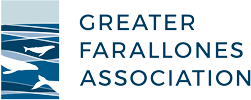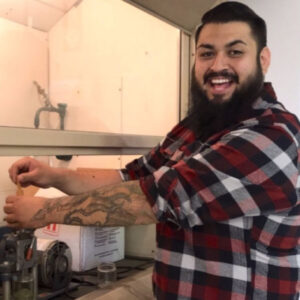Picture a Scientist: Ric DeSantiago

Ric DeSantiago is in the last year of the joint doctoral program between San Diego State University and University of California, Davis. He joined us virtually from the Long Laboratory at SDSU to chat about his research, science communication, and his non-traditional path into intertidal ecology.
He studies the connections between ecosystem spatial subsides, which are resources (nutrients or prey) that have passed from one habitat to a consumer in another habitat. More specifically, he studies how the non-native Sargassum horneri impacts rocky intertidal communities on San Nicolas Island in the Channel Islands. He’s interested in understanding if intertidal grazers will adapt and graze on this non-native sargassum, that’s originally from Japan. Ric has been fascinated by the amount of biodiversity that occurs in and under kelp patties.
Ric took a non-traditional path toward becoming the intertidal ecologist he is today. He was born in South Chicago and moved around a lot. He’s lived in Mexico and all over California. He graduated high school in Bakersfield, where college wasn’t really an option given the price of tuition. He did what many people from the area do. He worked in the oil fields. Unsatisfied with his work he decided to make a change. He explored several career paths including tattooing, working at a law firm, and even working as a private investigator. He went back to school at 26 at San Diego Mesa Community College. He helped two graduate students in the Long Laboratory at San Diego State University and helped conduct research in another lab at the University of San Diego. This work put him on the path he’s on today as an National Science Foundation Graduate Research Fellowship Program recipient and soon to be Doctor of Marine Ecology.
His favorite intertidal species is the Navanax, a voracious predatory slug. He likes them because they’re easier to find than nudibranchs, which they closely resemble. They are incredibly fast eaters, so much so that you would need a slow-mo video to catch them eating on camera. You can pick them up and feel the shells of other snails inside their body; Ric says they “eat nudibranchs like skittles.”
Ric has quickly become a popular science communicator across social media platforms. He uses memes to effectively engage scientists and nonscientists alike in conversations. “I say things out loud that are a little snit bit of something in time that many people can relate to. I’ll find a google stock image and make a meme later.” Ric’s scientific meme page takes dense topics like ecological coding or research design and simplifies them into relatable, humorous content. He sprinkles information in the caption, adds citations to published papers, or shouts out other researchers on social media. “I’ve found a small cheat that is a package of information. You may not have known you wanted to know about decorator crabs, but now that valuable science is condensed into a small bite of information that’s relatable to non-science people so everyone is included.”
Ric is dedicated to changing the current structure of the science field. “It’s off-balance. The demographics of those working within the field compared to the population are not representative.” He’s right. Looking at marine biology alone, just over half of marine biologists are male and 71% are white. The pressure to make equitable change often falls on students of color, women, and minoritized groups. Ric is hopeful though. “We’re not going anywhere unless we want to.” Ric recommends that aspiring scientists volunteer as much as they are able to. He himself has volunteered at over 300 schools. He also recommends getting out of your comfort zone. “We make a lot of decisions based on comfort. Rather than maybe be a little nervous, feel the nervousness; allow it, work through it.”
“If you wanna do science, do it. Don’t be scared. Don’t let others tell you you can’t be a scientist. They’re haters.”
Follow Ric on Instagram or check out his website:
www.instagram.com/dahoodscientist/


